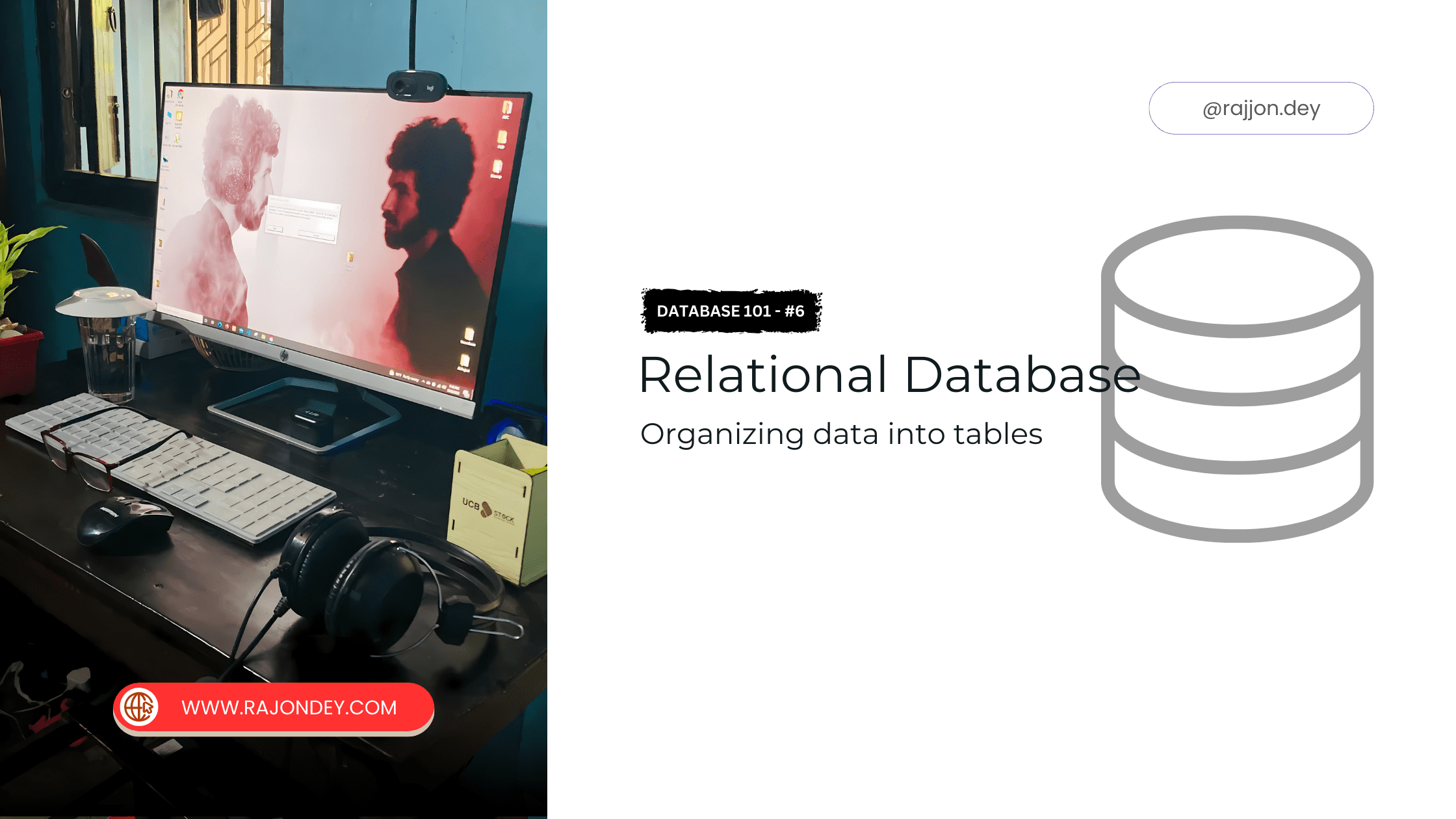Relational Database
 Rajon Dey
Rajon Dey
Relational databases store data in tables consisting of rows and columns. Each table represents an entity (like customers or orders), and rows within the table represent individual records. The structure allows for easy data retrieval and management using SQL.
Popular Relational Database Management Systems (RDBMS)
MySQL: Widely used for web applications.
PostgreSQL: Known for its robustness and advanced features.
Oracle Database: Popular in large enterprises.
SQL Server: Common in environments that use Microsoft products.
What is SQL?
SQL (Structured Query Language) is the standard language for interacting with relational databases. It allows for querying, updating, and managing data.
Basic SQL Commands:
SELECT: Retrieves data from one or more tables.
SELECT * FROM Customers;
INSERT: Adds new records to a table.
INSERT INTO Customers (Name, Email) VALUES ('John Doe', 'john@example.com');
UPDATE: Modifies existing records.
UPDATE Customers SET Email = 'john.doe@example.com' WHERE Name = 'John Doe';
DELETE: Removes records from a table.
DELETE FROM Customers WHERE Name = 'John Doe';
Database Design Principles
Normalization and Its Forms
Normalization is the process of organizing data to reduce redundancy and improve data integrity. Common forms include:
1NF (First Normal Form): Ensures that each column contains only atomic (indivisible) values.
2NF (Second Normal Form): Requires that the table is in 1NF and all non-key columns are fully dependent on the primary key.
3NF (Third Normal Form): Requires that the table is in 2NF and all columns are dependent only on the primary key.
Designing Efficient Databases
Define Clear Relationships: Use primary and foreign keys to define clear relationships between tables.
Indexing: Create indexes on frequently queried columns to speed up data retrieval.
Avoid Redundancy: Use normalization to eliminate redundant data, which can save storage space and improve performance.
A tool I like:
https://www.eraser.io/
Understanding these foundational concepts of relational databases will help you design and manage efficient, scalable, and reliable databases.
Subscribe to my newsletter
Read articles from Rajon Dey directly inside your inbox. Subscribe to the newsletter, and don't miss out.
Written by

Rajon Dey
Rajon Dey
I'm a Software Developer, my passion is crafting smart, meaningful, and professional websites that enhance the online presence of individuals and businesses, making the web a more engaging, effective, and better platform. Get the data - https://developer-data.beehiiv.com/